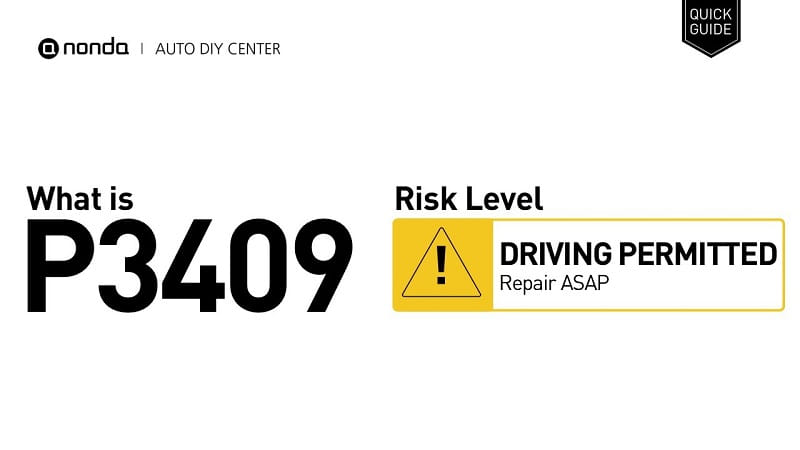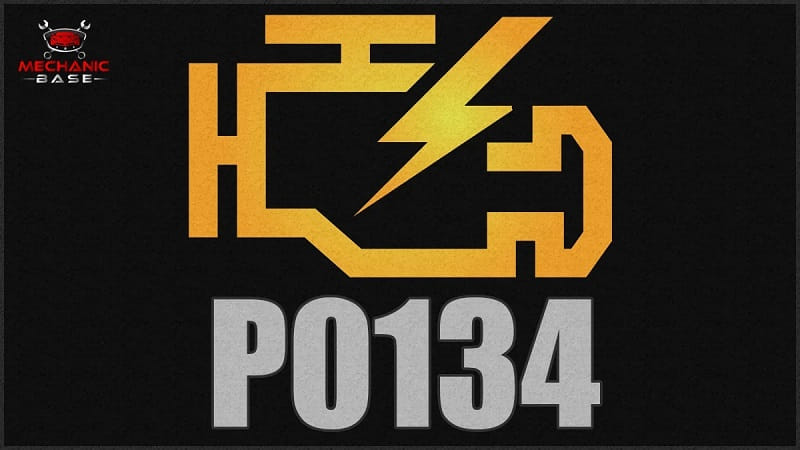This post contains affiliate links. This means I will make a commission at no extra cost to you should you click through and make a purchase [ “As an Amazon Associate, I earn from qualifying purchases.” ]. Read the full disclosure here.
Understanding DTC P3409: Cylinder 2 Deactivation/Intake Valve Control Circuit/Open GuideMechanic.Com Modern engines are marvels of mechanical and electronic integration, designed to balance power, efficiency, and emissions.
To achieve this, many vehicles use systems like Active Fuel Management (AFM) or Variable Valve Timing (VVT), which depend heavily on sensors, solenoids, and electronic circuits.
When one of these systems fails or behaves unexpectedly, the engine control module (ECM) or powertrain control module (PCM) will trigger a diagnostic trouble code (DTC) to help identify the issue.
One such code is P3409, which stands for “Cylinder 2 Deactivation/Intake Valve Control Circuit/Open.” This article explores what this code means, its causes and symptoms, how to diagnose it, how to fix it, and how to prevent it in the future.
See Also: P340A, P340B, P340C, P340D, P340E, P340F ISO/SAE Reserved
P3409 Cylinder 2 Deactivation/Intake Valve Control Circuit/Open

What Does P3409 Mean?
DTC P3409 is set by the ECM or PCM when it detects an open circuit in the intake valve control system responsible for the deactivation of cylinder 2.
This issue typically occurs in vehicles equipped with AFM or Displacement on Demand (DoD) — systems designed to improve fuel economy by deactivating certain engine cylinders under low-load conditions.
When a circuit is described as “open,” it means there is a break or lack of continuity in the wiring, solenoid, or related connectors, preventing electrical signals from properly activating the deactivation mechanism.
The intake valve control circuit manages the flow of oil to specialized hydraulic lifters that collapse to prevent valve operation, thereby deactivating the cylinder. If this system fails, the ECM cannot deactivate cylinder 2, and engine efficiency may be reduced.
How the Cylinder Deactivation System Works
In AFM/DoD systems, the ECM controls oil pressure-actuated solenoids that target specific intake and exhaust valves via hydraulic lifters.
When conditions are optimal (e.g., light throttle, cruising speeds), the ECM sends a signal to close solenoids and reduce oil pressure to the lifters in selected cylinders — effectively disabling valve movement and stopping combustion in those cylinders.
For cylinder 2, the intake valve deactivation solenoid allows the engine to temporarily switch to a V4 mode from V8. If the solenoid doesn’t respond due to an open circuit, deactivation fails, and the vehicle will run all cylinders regardless of load.
P3409 Cylinder 2 Deactivation/Intake Valve Control Circuit/Open
Symptoms of DTC P3409
When the intake valve control circuit for cylinder 2 has an open circuit, the following symptoms may occur:
- Check Engine Light (CEL) illuminated
- Reduced fuel economy
- Engine runs rough at idle
- Noticeable drop in performance or acceleration
- AFM/DoD system disabled
- Cylinder misfire or noise in engine
- Vehicle unable to enter V4 mode (stays in V8)
In many cases, these symptoms may be mild and difficult to notice initially but will become more prominent as the condition worsens.
Causes of P3409
There are several potential causes for an open circuit in the intake valve control system:
Faulty Cylinder 2 Intake Valve Solenoid:
The most common cause. Solenoids can fail internally due to wear, heat, or oil contamination.
Open Wiring Harness:
A broken wire in the control circuit between the PCM and solenoid can interrupt voltage flow.
Damaged Electrical Connectors:
Loose, corroded, or disconnected plugs can break the circuit.
Internal ECM/PCM Failure:
Rare, but the control module itself could have a damaged driver or internal fault.
Contaminated or Low-Quality Oil:
Dirty oil can restrict oil flow to the lifters and solenoids, causing mechanical and electrical issues.
Oil Flow Blockage or Sludge:
Oil passages clogged with sludge can prevent oil-actuated components from operating correctly.
P3409 Cylinder 2 Deactivation/Intake Valve Control Circuit/Open

Diagnosing DTC P3409
A step-by-step diagnostic approach is the best way to resolve this issue. Here’s how a technician would typically proceed:
1. Scan for Trouble Codes
Use an OBD-II scanner to confirm the presence of P3409 and check for related DTCs (e.g., P3400, P3411, misfire codes).
2. Visual Inspection
Inspect the wiring and connectors related to the cylinder 2 intake valve solenoid. Look for:
Cut, frayed, or broken wires
Loose, dirty, or corroded connectors
Oil leaks around the solenoid
3. Check Oil Level and Condition
Ensure that the oil level is adequate and that the oil is clean and of the correct specification. Replace oil and filter if needed.
4. Solenoid Testing
Use a multimeter to measure the solenoid’s resistance and compare it to manufacturer specs. You can also apply 12V power to the solenoid manually (if safe to do so) to confirm actuation.
5. Check Circuit Continuity
Test the continuity of the control wire from the ECM to the solenoid. If continuity is lost, the wire may be broken internally or disconnected.
6. Test for Voltage
With the ignition on, test for voltage at the solenoid connector. A missing voltage or ground signal indicates a problem with the circuit or PCM.
P3409 Cylinder 2 Deactivation/Intake Valve Control Circuit/Open
Fixing P3409
Once diagnosed, here are the most common repairs for DTC P3409:
- Replace Cylinder 2 Intake Valve Control Solenoid
- Repair or replace damaged wiring harness
- Clean or replace corroded or damaged connectors
- Flush engine and replace oil and oil filter
- Clear out oil passage blockages
- Reprogram or replace the ECM/PCM (if needed)
After making repairs, clear the code with a scan tool and test drive the vehicle. If the code returns, further inspection may be needed.
Vehicles Affected by P3409
The P3409 code is typically seen in General Motors (GM) vehicles equipped with AFM or DoD systems. These include:
- Chevrolet Silverado
- GMC Sierra
- Chevrolet Tahoe
- GMC Yukon
- Cadillac Escalade
- Chevrolet Suburban
- Chevrolet Avalanche
These vehicles often feature 5.3L, 6.0L, or 6.2L V8 engines with AFM systems.
P3409 Cylinder 2 Deactivation/Intake Valve Control Circuit/Open
Preventing P3409
Prevention largely comes down to maintenance and careful inspection. Here are some best practices:
- Use the recommended engine oil — incorrect oil viscosity or poor-quality oil can affect valve control systems.
- Change oil and filter at regular intervals — clean oil keeps solenoids and lifters functioning properly.
- Check for early warning signs — rough idle or reduced fuel economy could be signs of AFM trouble.
- Inspect wiring during routine service — especially in areas where heat and vibration are prevalent.
Conclusion
DTC P3409: Cylinder 2 Deactivation/Intake Valve Control Circuit/Open points to an issue in the circuit responsible for managing the intake valve solenoid in an AFM-equipped engine.
The most common cause is a faulty solenoid or open wiring, but oil condition and system cleanliness also play crucial roles.
By understanding how AFM works and methodically diagnosing the circuit, technicians and vehicle owners can resolve this issue and restore engine efficiency.
Regular oil changes and electrical inspections go a long way in preventing P3409 and similar codes from affecting engine performance.
- 4×4 Truck for Sale Used - October 21, 2025
- 4×4 Truck for Sale Under 20K - October 15, 2025
- 4×4 Truck for Sale QLD - October 12, 2025
